The History of the Newfoundland Dog
|
The Newfoundland Dog is well renowned for its working ability, the original "ships dog" it has been used for taking ropes ashore in North Atlantic seas, retrieving
lost fishing gear and rescuing humans. It has also been used as a pack animal, sled dog, and carting dog. Its immense strength and thick double layered coat make
it ideally suited for the work it does, yet its gentle nature and mild guarding instinct have endeared it to people throughout history. From J.M. Barrie's 'Nana' in Peter Pan to Byron's "Boatswain", the Newfoundland
dog has been loved and adored the world over. The history of the Newfoundland Dog is buried in the mists of time. The breed as we know it today originated from dogs brought from the island of Newfoundland to England in the early 1800's. There are many theories as to the origin of the breed the three most popular are;
The first written record of the Newfoundland Dog occurs in 1775 when George Cartwright,
entrepreneur, sportsman, and diarist, applied the name of the breeds native island to his own dog. During the 18th Century, Newfoundland Dogs began to increase in popularity and numbers, it is around this time that the Newfoundland begins to appear
in literature and journals, examples include; Journals of the Lewis Clark Expedition to the Pacific
Northwest; 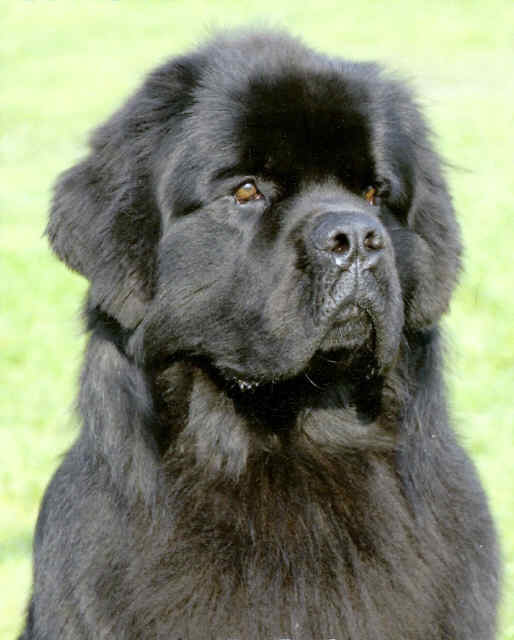 A typical 21st century Newfoundland The first recorded official showing of the Newfoundland was at the national dog show in Birmingham, England in 1860, (The show continues to this day and is considered the world's oldest surviving dog show.). Six Newfoundlands were entered. Most of todays Newfoundlands can trace their ancestry back to an English Show Dog named Siki in the 1920's In the United Kingdom statistics from The Kennel Club show the Breed Population is stable with around 1,000 Newfoundlands being registered each year through their registration scheme. |
"I am the noble Newfoundland, My voice is loud and deep; I keep a watch all through the night While other people sleep." Author unknown - 19th C song 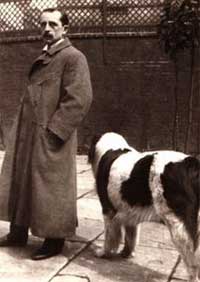 J. M. Barrie with his Newfoundland 'Luath' 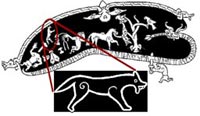 Viking illustration of a dog 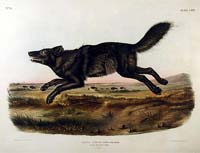 19th Century illustration of American Black Wolf  1790 Illustration of Newfoundland Dog 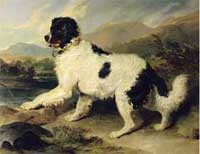 Newfoundland Dog Called Lion, 1824 |